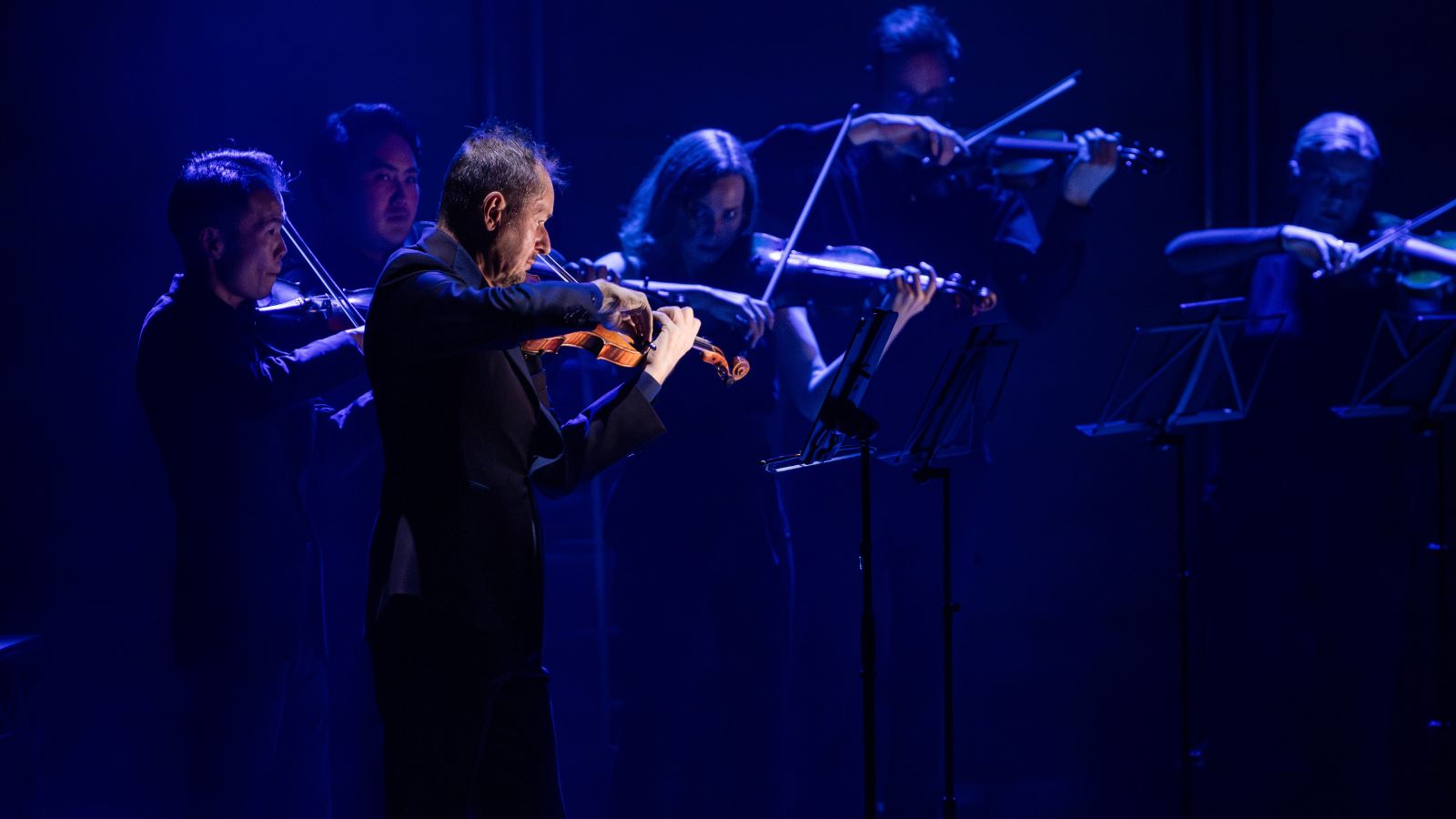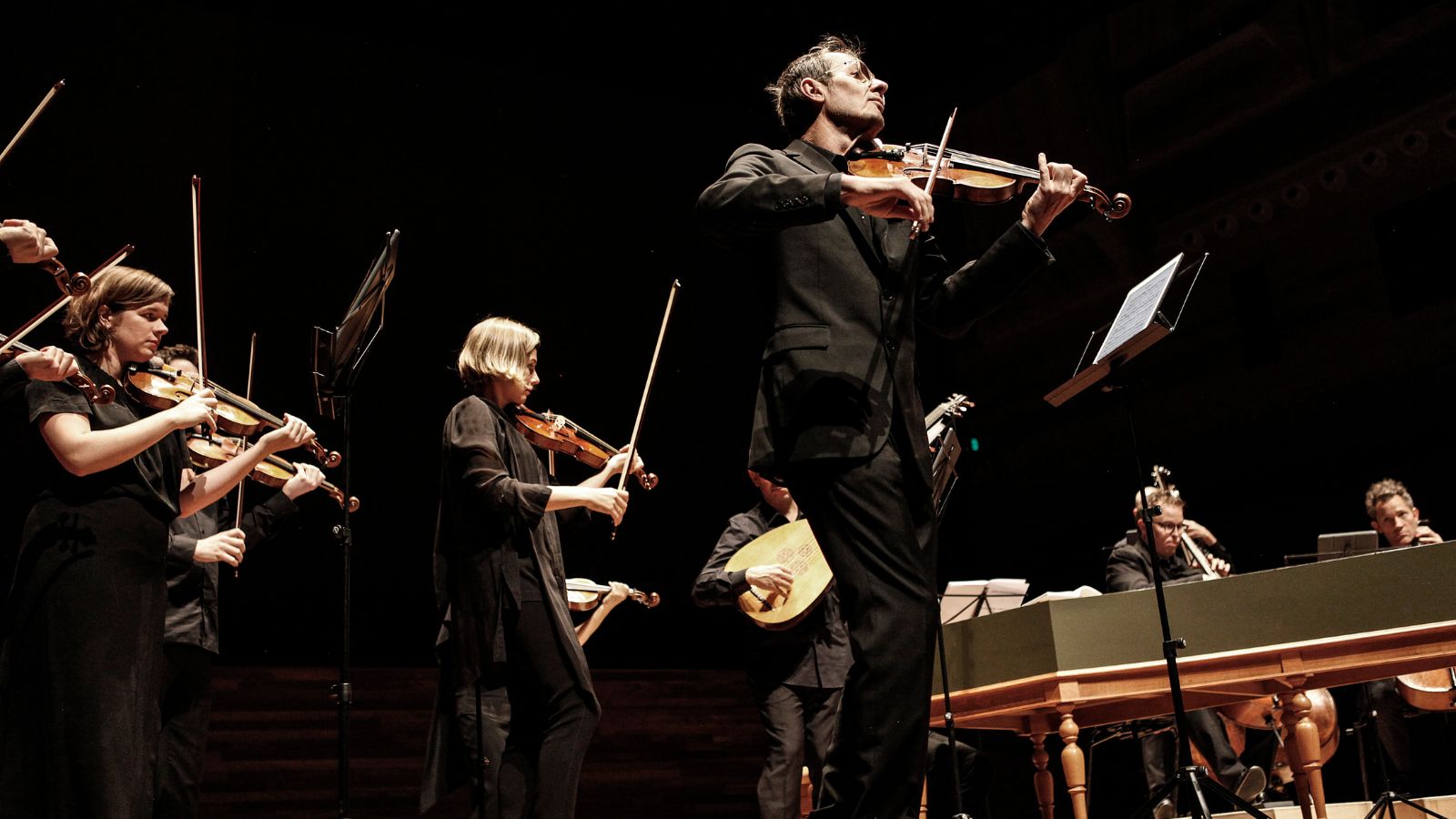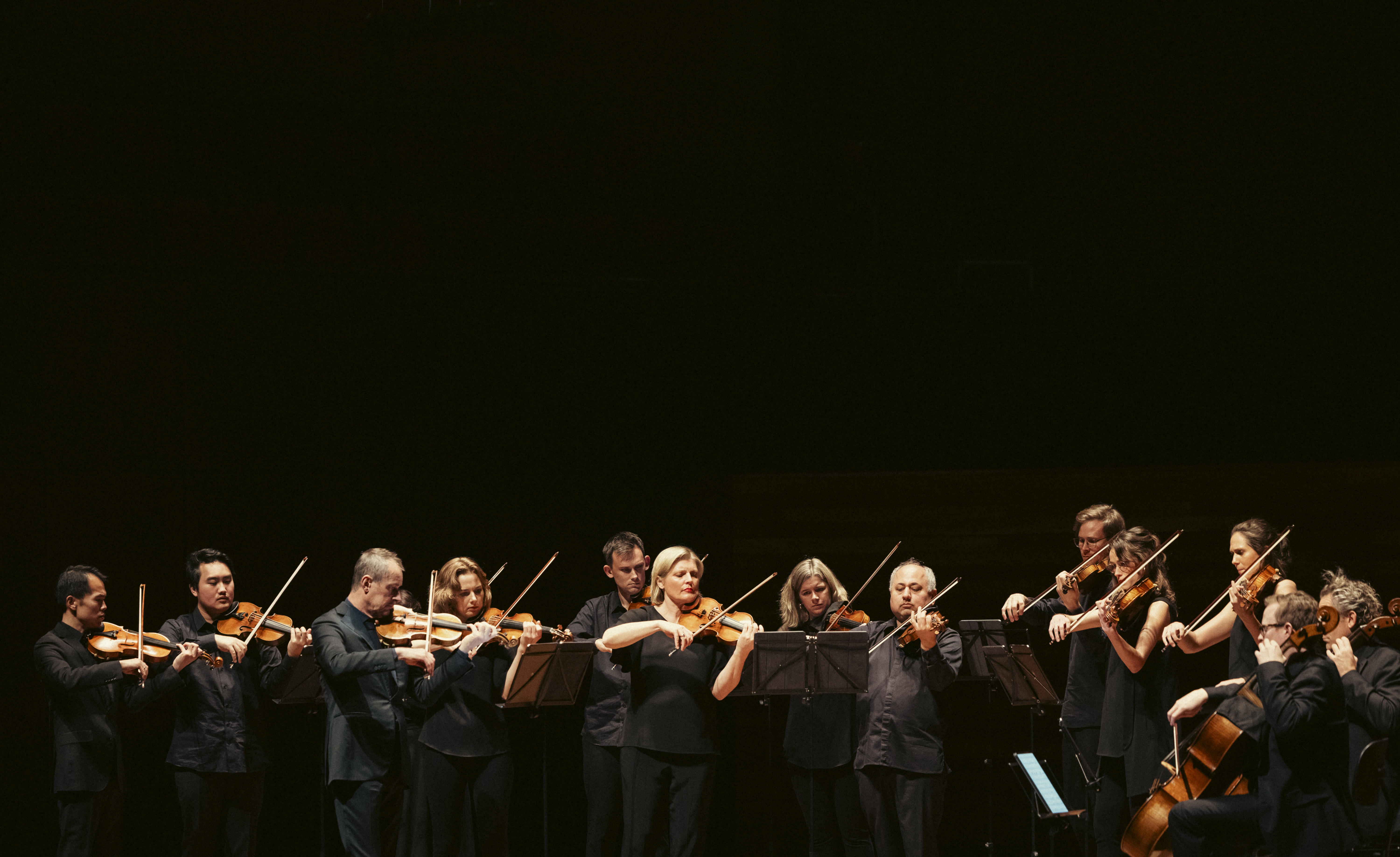
By Simon Tedeschi
Many years ago, I was told a story that went something like this. Upon returning to the stage for an encore at the end of a recital, the great German pianist Wilhelm Kempff began to play the first notes of Johann Sebastian Bach’s monumental Goldberg Variations. The expectation was that he would play the introductory aria and then leave but instead Kempff did something incredible. He went on to play the entire work – 30 variations – in all of its sublime 75-minute grandeur. By the
time he was done, the audience had slipped away – but for one person: Albert Einstein.
This tale – like Beethoven kissing the young Liszt on the forehead or Liszt kissing nuns beneath their habits – is of dubious provenance. If there is any truth to the story, the pianist was most likely Rudolf Serkin and there were not one but three people who stuck around until the very end: the violinist Adolf Busch, the pianist Artur Schnabel and Einstein.
True or not, for me the real resonance of this story is in what it says about the power of Bach, the man who, for classical musicians, is the greatest composer ever known and the foundation of the way we practise, perform and conceive of music as a way of life. Einstein, who revealed the truth behind the most intractable mysteries of time and space, once said of Bach (unlike the Kempff story, this is actually verified): “listen, play, love, revere – and keep your trap shut.” In other words, the greatest scientist of the 20th century could explain why people travelling at vastly different speeds age at different rates, or why matter and energy are equivalent, but when it came to the music of Bach, he couldn’t say much at all.
There is no other composer in history for whom the language of worship is so readily applied, and few figures in any artform are spoken about with such awe. We so desperately want to “know” this man, but he remains an enigma. Through various modes of analysis we try and come to terms with his tools; we take the whole apparatus apart to examine the smallest components; we look at the famous portrait of his portly face; we read of the mortal aspects of his life – a botched eye operation, a four hundred kilometre walk, a stint in jail – to try and console ourselves that he was just like us. But then we hear his music and are shorn of all we thought we were. Even for the tiny minority who aren’t moved by his music – Tchaikovsky to name one – no classical musician can escape the parameters that Bach has set. Alongside Plato, Leonardo, Dante and Shakespeare, he is one of the founders of the Western understanding of the world.
True or not, for me the real resonance of this story is in what it says about the power of Bach, the man who, for classical musicians, is the greatest composer ever known and the foundation of the way we practise, perform and conceive of music as a way of life.
Life has changed a great deal in 274 years. Bach’s world, no less troubling than ours and in many ways more so, was far more predictable. Matters of life and death were dictated by the Holy Scriptures, a father was the head of the household, a mother took care of her home and (many) children and, apart from the church, the king was the final arbiter. Travel was a logistical nightmare – hence the long walk – and science as we know it was only beginning to take shape in what would come to be known as the Age of Enlightenment. What would Bach have made of our world, riven as we are by religious and cultural conflict, contestable truths and political soundbites, able to access news from other countries in less than a second and confronted by ecological challenges of a truly global scale?
For Richard Tognetti, who performs Bach’s A Minor Concerto with the Australian Chamber Orchestra, Bach continues to speak to us in our present condition with immediacy and clarity. Tognetti takes the view that even in the absence of absolutes, Bach is the binding force. Nearly a quarter of the way through the 21st century, his music must address the exigencies of our atomised era. But it is also instructive to remember that Bach’s position at the summit of the musical firmament was not the case during his own life, much less after his death. There are a number of reasons for his ascension now. For a start, unlike other composers such as Handel, Bach did not seek out publication and self-promotion. His work was, on the whole limited to central and eastern Germany. It is also the case that Bach wrote primarily with a purpose in mind: during his life, he was known in professional musical circles as a great organist, teacher, composer and conductor.
The deeper truth is that the world was just not ready for him. Music lovers in the early 18th century generally regarded Bach's music as being overly ornamental, rarified and convoluted, with nary a “melody” in sight. Europe was heading in far more homophonic directions, the glistening and graceful textures of “sentimentality”, as epitomised by Handel and Telemann and later by Mozart, Clementi and Haydn, setting in place the conditions for the impassioned emotionality of romanticism.
History is every bit as intricate as one of Bach’s fugues. Things rarely happen in linear fashion but return later in ingenious ways. It is only thanks to the Romantic period, with its rejection of orthodoxies and its drive towards national identity, that Bach, that mysterious master of the past, would come to be venerated as the foundation of the Western music tradition at all. Following the devastating Napoleonic Wars, Germany – a collection of states emerging from the dissolution of the Holy Roman Empire – needed a quintessentially German composer. For this to happen history needed its agents. Here we are indebted to two marvellous figures: Sara Itzig Levy, an educated, urbane harpsichordist and artistic patron, and her great-nephew, the composer, pianist, organist and conductor Felix Mendelssohn.
It is only thanks to the Romantic period, with its rejection of orthodoxies and its drive towards national identity, that Bach, that mysterious master of the past, would come to be venerated as he foundation of the Western music tradition at all.
Again, just as in one of Bach’s fugues, history often seems to have an inevitability to it. These two families, the Mendelssohns and Bachs, seemed always to be within each other’s periphery. Levy had studied harpsichord with Wilhelm Friedemann Bach, Bach’s eldest son, and also commissioned work from Carl Philipp Emanuel Bach, one of the most important transitional figures between the baroque and classical periods. While this particular period was not kind to either women or Jews, Levy was fortunate in that she was born into a well-to-do family of intellectuals who valued music and education (and not just for men). Crucially, this was also the period of the Haskalah (drawn from the Hebrew sekhel meaning “reason” or “intellect”), the drive by European Jews to be accepted more broadly into intellectual and cultural life. It was this movement that gave Levy the impetus to join the Berliner Singakademie, a choir led by Carl Friedrich Zelter, a kind of German 19th-century Kodály, and later tutor to the young Mendelssohn. One of the works that this choir rehearsed and performed was Bach’s magisterial Mass in B minor.
Mendelssohn’s father Abraham was also knowledgeable about Bach and, through no small effort, owned several of his original manuscripts, treasures of inestimable value that were often treated disgracefully after Bach’s death, used as marketplace food wrapping, among other things. For discerning minds suchas Abraham Mendelssohn and Zelter, Bach’s music, though not yet universally known, was passed around like a kind of holy relic.
The course of musical history was set in a new direction when Bella Salomon, Mendelssohn’s much-loved grandmother, presented the 14-year-old Felix with a copy of the St Matthew Passion. Though we can all agree that a grandmother’s love knows no limits, Salomon could hardly have known that hers was ultimately a gift to humanity. Six years later, Mendelssohn, then 20 years old, went on to conduct the first- public performance of the Passion since Bach’s death, with the audience including Heine and Hegel. “To think,” Felix later wrote, “that it took ... a Jew’s son to revive the greatest Christian music for the world!”
The two works programmed are emblematic of the through-line that extends from Bach, through Mendelssohn, to the modern day. Bach’s A Minor Concerto, one of the glittering jewels in the violin repertoire, follows the traditional three-movement concerto form (allegro moderato, andante, allegro assai). The first movement is in ritornello form, in which the recurring orchestral theme alternates with contrasting episodes played by the solo violin. The andante is in binary form (AB) and is notable as one of the most exquisite melodies in all of music.
The third is also in ritornello form and, like so many of Bach’s final movements, is a gigue, a popular dance inherited from the British jig. It is hard to hear this movement and not think of “groove”, the term jazz musicians use for music that rouses the human body to dance.
Throughout the concerto, the soloist must demonstrate virtuosity, tenderness and tonal control while ensuring that all the sinuous textures blend seamlessly with the other instruments. When I asked Tognetti how he prepares a work like this, his response was straightforward: he plays the music over and over. This is really the only way to “find oneself into” Bach’s music: one grows alongside it, and, indeed, because of it. Almost three centuries after his death, Bach is still the barometer for
musicians because his immense output, whether the Well- Tempered Klavier, the cantatas or solo cello suites, is a mirror to the deepest contours of the self. In his supple counterpoint and architectural symmetry, his sublime unity and spiritual sincerity, Bach reveals us to ourselves in all our imperfection. Exactly how he does this remains a mystery. As Einstein also wrote: “Never lose a holy curiosity.”

If not for the influence of Bach, Mendelssohn’s Octet would never have been written in the way that it was, or perhaps might never have been written at all. Composed when Mendelssohn was 16 years old as a birthday gift for his violin teacher Eduard Rietz – how much must we thank the great figures of the past for their gifts to each other? – it is a testament not only to his prodigious talent but also his love of Bach.
The work has four movements: the first, allegro moderato ma con fuoco, is in sonata form (exposition, development, recapitulation), reflective of Mendelssohn’s sensibility as a romantic at heart but a classical craftsman. In this movement, counterpoint – the interweaving of musical voices stating, augmenting, reversing, extending and abbreviating motifs – asserts itself with reckless joy. The second movement, andante, is in ternary (ABA) form, demonstrating the composer’s seemingly effortless ability to weave a melody out of thin air. Next comes a scherzo: allegro leggierissimo. Inspired by Goethe’s Faust, this movement is lively and mysterious, ebullient and theatrical. Incredibly, even at 16 years of age, Mendelsohn’s characteristic “voice” seems fully formed.
Finally comes a presto in sonata-rondo form (ABACAD, then a mix of BCA), virtuosic, joyous and scintillating, bringing the Octet to an exultant conclusion. Throughout the whole work, Bach’s ghost is never far away: in the polyphony, in the thematic development, in the ingenious integration of harmony and rhythm, and in the irreducible complexity of the whole. Through Bach and by Bach, we can come just a little closer to understanding that, even though knowledge has its frustrating,
even painful, limits, and God might not be who we once thought he was, in the face of seemingly insuperable challenges the human spirit springs eternal. As Bach himself really said: “Faceto the reality.”
Time and time again, no matter what we play, we return to Bach. We never tire of him; his lessons are endless. This is surely why three exceptional men, in the first quarter of a devastating century, sat in their seats 75 minutes longer than they had to. It also goes some way to explaining why Kempff – or, rather, Serkin – played the entire Goldberg from beginning to end. Even if this story never actually happened, I choose to read it as a fable. Even when the world seems to be falling apart,
when it is harder than ever to trust what is really going on, by listening to, studying, reading about and playing Bach, we are made into more expansive beings. Experiencing a work like his A Minor Violin Concerto, we can hear human voices in all of their wondrous diversity as they come together together as one, glorious tapestry.
Written by Simon Tedeschi
Simon is an acclaimed concert pianist and writer. His first book, Fugitive, was shortlisted for the Judith Wright Calanthe Award at the Queensland Literary Awards and the Victorian Premier’s Prize for Poetry. In 2022, he was named the winner of the Australian Book Review’s Calibre Prize.
Tognetti. Mendelssohn. Bach. touring nationally to Newcastle, Melbourne, Adelaide, Canberra, Brisbane, Sydney and Wollongong, 5-23 September. Click here to buy tickets.
